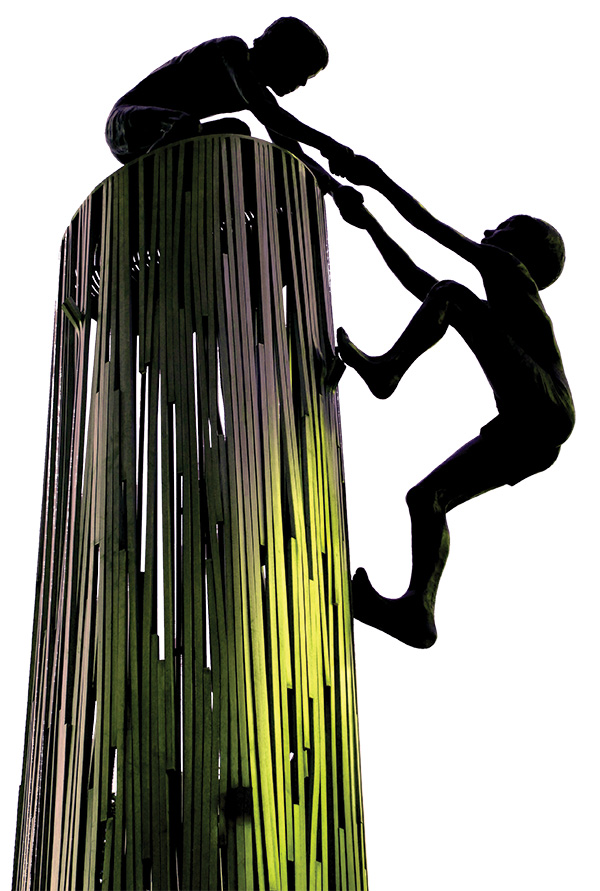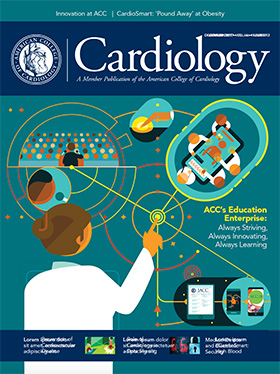From the Starting Line | Professional Development Through Inter-Society Collaboration and Networking

Partnership and collaboration. The value of this in our professional lives was renewed for me recently when I attended the American Heart Association (AHA) 2017 Scientific Sessions in Anaheim, CA. It had been four years since I’d attended an AHA conference. As a clinically oriented interventional cardiologist, the importance of active engagement with the ACC and the Society for Cardiac Angiography and Interventions (SCAI) is clear to me. Attending the AHA meeting was not quite on my priority list, because of the limitation of available time off for continuing medical education (CME) to attend conferences and the financial cost of attending numerous annual conferences.
This year, one of my mentors invited me to attend his AHA Council on Clinical Cardiology award ceremony. With this objective in mind, I decided to attend AHA 2017. My boss graciously granted me one day of CME time off from work and I made my registration and travel plans.
It was lovely and a whirlwind of activities. During my day and half at AHA 2017, I met with colleagues and mentors from my previous training institutions, made new friends and participated in the AHA Women-in-Cardiology (WIC) informal networking session. I attended lecture sessions on several clinical topics relevant to my day-to-day clinical work.
At the WIC networking session, I received pearls of wisdom from women leaders in cardiology regarding their career journey — mistakes made, lessons learned. Contrary to my prior reservations regarding the basic science emphasis at AHA scientific meetings, my recent experience reminded me of the value of inter-society networking and collaboration.
The ACC recognizes that partnership with other cardiovascular societies helps the College fulfill its mission of enhancing heart health and transforming cardiovascular care. For decades, the ACC has partnered with the AHA in the development of clinical practice cardiovascular guidelines. The ACC and AHA recently partnered with nine other professional societies in the development of the 2017 ACC/AHA High Blood Pressure Guideline. Key take-home points are the changes in the definition of hypertension and the hypertension treatment algorithm. This collaborative effort was performed at the request of the National Heart, Lung, and Blood Institute. The guideline was revealed at AHA 2017.
In addition to ACC’s collaborative work on guideline development, the College partners with other professional societies such as SCAI, the Society of Thoracic Surgeons and the Heart Rhythm Society (HRS) in the development of clinical registries such as CathPCI Registry, TVT Registry and ICD Registry to improve the quality of cardiovascular care. The ACC, Heart Failure Society of America, HRS and SCAI recently announced a partnership to develop modules to help subspecialty cardiologists meet the American Board of Internal Medicine’s maintenance of certification (MOC) requirements.
In front of Heart House is a sculpture called Man Helping Man. This one-story sculpture depicts two boys climbing a tree trunk. The boy at the top of the tree trunk stretches out both his hands to help the other boy reach the top. The sculpture reminds me of the noble philosophy within the College — we strive to assist each other — ACC colleagues, cardiovascular team members, cardiovascular trainees and other like-minded cardiovascular societies to fulfill a common goal: transform cardiovascular care and improve heart health.
As ACC members and early career physicians, we can adopt the same principle of “man helping man,” in our relationship with the various cardiovascular societies. Within the reasonable scope of our ability and resources, we can lend our voice and resources to assist these cardiovascular societies achieve the goal of improved cardiovascular care. The first step is to identify a cardiovascular society and/or subspecialty professional home and become a member. Next step, consider volunteering your time and resources to serve on committees or workgroups within that society home. Finally, wherever possible, seek opportunities to collaborate or network with members of other cardiovascular societies relevant to your clinical interests. As a wise philosopher once said, “Society is unity in diversity.” We learn from each other and we help each other.
Keywords: ACC Publications, Cardiology Magazine, American Heart Association, Trees, Education, Medical, Continuing, Mentors, Friends, Goals, Registries, Certification, Internal Medicine, Heart Failure, Hypertension, Awards and Prizes, Algorithms, Angiography
< Back to Listings

